A look at the biography of Yaqub Leith Safari
"We have risen with the good belief that we will not destroy Sistan. If God Almighty grants us, we will increase what we can to Sistan province.". Yaqub Leith - taken from the history of Sistan
The magnificent and wonderful land of Sistan, which is located in the southeast of Iran, with the great Hirmand river and the beautiful Hamon lake as the largest freshwater lake of the Iranian plateau, has formed a large and fertile plain from which three types of crops can be harvested annually, in a way This land has been called the granary of Asia.
Many researchers and historians have considered the influence of the ancient civilization of Sistan and Hirmand on Iran, the Islamic world and even human civilization.. The existence of written works left by famous scientists, philosophers, theologians and poets, especially after Islam in this system, is a clear proof of this claim.. This land is the birthplace of great people like Rostam, the great warrior of ancient Iran, Yaqub Leith, Farrokhi Sistani, Abu Saeed Sajzai, Abu Suleiman Sajestani, Abu Dawood Sajestani and thousands of guardians of Kian and the precious architect of the Palace of Literature and Culture of Iran.. Harir bin Abdullah Sajzai, the first Shia jurist after Islam, was from Sistan and the first poem in Persian language after Islam was written here.. Muhammad bin Wasif Sajestani has been introduced as the first Persian-speaking poet and a barrier-breaker in the history of this country..
The innovation of the first windmills in the world has been reported from Sistan. According to some discovered ancient works, this land has had a very prosperous civilization and culture since the distant past, and due to the special climatic, political and cultural situation of the region, it has been considered the meeting place of the great civilizations of Farrood, Mesopotamia, India and China.. The burnt city and its intelligent civilization, with a delay of five thousand years, as the largest settlement of urbanization in the eastern half of the Iranian plateau, is a unique example and a real diagram of the knowledge, industry and culture of the distant past of Sistan.. Also, Khwaja Mountain, which is a survivor of the Parthian and Sassanid eras, contains important elements of the history of architecture, art and religious beliefs of this order.. The city of Dahane Gholaman, a memory of the Achaemenid era, is the only known city in the conventional sense today, whose architectural-religious patterns show the growth and flourishing of the first systematic and codified religious ideas.. With these honors and hundreds of other tourist attractions, natural, cultural and… In Sistan, this land has become a unique and rare exhibition.
"The Abbasid government was built on treachery and makr. Look what they did to Buslama, Abu Muslim, Baramke and Fadl Sahl with all the service they had done to them. And no one should trust them". Yaqub Leith - taken from the history of Sistan
The Bani Abbas government began to decline and decline from the middle of the third century AH, and the Abbasid caliphs were constantly facing many problems due to rebellions and rebellions around and on the sides of their possessions.. There is no doubt that Harun was one of the greatest Abbasid caliphs, however, the weakness of the Abbasids began from the time of this caliph.. The antipathy and enmity of the Abbasid dynasty with the Ali dynasty (ع) Especially, Harun al-Rashid's extreme hostility towards them and the overthrow of the Barmakians, who were a scholar-loving and literate Iranian family, caused disturbances in most of the Islamic territories and led to the independence of the Abbasid territories..
The existence of factors such as the attribution of the majority of the national heroes of the Shahnameh to Sistan has made the people of this land free, patriotic, focused on the nationality and committed to the national habits and customs, and has no faith in the Abbasid caliphate, and has led to the emergence of various political and social groups such as the Ayarans. It was in this region that these groups also became the founders of Pertwani uprisings against the Arabs. Yaqub was their leader.
Tahir Zwaliminin, who had one hand in the agreement of the Caliph Mamun and the other hand in the agreement of Imam Reza, although by guarding the legacy of his ancestors in the time of silence, he raised the flag of dormant Iranianism again, but his successors were mostly appointed by the Caliphate institution, rather than having independence like that great general.. Now, after two centuries of silence, the disintegrated land of Iran, the graveyard of ancient kingdoms, is going to shake its body..
"I am a good-hearted man, if I find bread, I will eat, and if not, I will serve good men and young men, and if I do something, I will do it for the sake of the name, not for the sake of the bread.". Yaqub Leith - derived from Samak Ayar
There are different narratives about the origin of Jacob Leith in historical books. Hamdollah Mostofi writes this about Leith, Yaqub's father, in his selected history: "Leith Royger was Sistani's child, because he saw in himself a weakness, he didn't pay attention to Royger and fell into weaponry and aiari".(۱)
Although some historians have not considered Yaqub Leith as a Roigarzadeh, but the unknown author of the history of Sistan considers him to be behind the Sassanids and traces his lineage to Anushirvan after ten mediations and to Kiyomarth after fifty-five mediations.(۲)
Yaqub Leith in the year 206 or 207 AH in the family of Roygari named Leith in the village of Koranin, near the city of Zarang.(Silver) was born(۳) Like him, Leith's sons also had a job as a watchman, but because a small village did not need several watchmen at the same time, some of Yaqoob and his brothers' time was spent on other entertainments, such as: Knives, shooting, throwing spears, horse riding and ayari were spent. Yaqoob and his brothers reached perfection in Ayari and when their father died, Yaqoob inevitably continued his work to provide for his family, but at the same time, he also had great zeal.. Therefore, he became the commander and leader of a group of mercenaries who attacked caravans and caravans at suitable opportunities and looted the precious goods that were sent to the caliphs to distribute among the needy..
Since the end of Ma'mun's caliphate, the government of Khorasan and Sistan was in the hands of the Taheri family, and they sent people to the government of Sistan, and most of their representatives clashed with local rebels.. Salih bin Nasr was one of those who rose up in Sistan against the Tahirians and the Caliph "Al-Mutakkul Ali Allah".. At the beginning of 232, Yaqub joined Salih with a group of his companions. On the 5th of Muharram, he took 237 the historical city of Bust from the hands of the Caliph's representative and gave it to Saleh, and in recognition of this service, he obtained the rank of colonel of Bust.. As a result of cooperation with Saleh, Yaqoob's work increased and he found many friends and devotees. Saleh, who had won over his enemies with the help of Yaqub, after a while, oppressed the people and looted the cities.. Therefore, Yaqub opposed him and fought him in 244 and defeated him. After that, the Sistan forces pledged allegiance to Darham bin Nasr, Saleh's brother, and Yaqub was one of those who was chosen to be the commander of those forces..
Darham, who was afraid of Yaqoob's growing courage and strength and his popularity among the Sistan elites, ordered his relatives to kill Yaqoob, but Yaqoob, who had been informed, arrested him and sent him to prison and killed a number of his companions..
The people of Sistan on the 25th day of Muharram 247 AH equal to April 240 AH (April 12, 861 AD) They made a pact with Jacob, the son of Leith (They pledged allegiance).(۴)
"I have raised the gift to the creation of God, blessed and exalted… I will be the cause of removing the Tahirians and their kind from the Muslims.. Yaqub Leith - taken from the history of Sistan
In 247 A.H., Yaqub Leith formed the first independent national government in Iran with the help of the free people of Sistan and chose the city of Zarang as the capital and before addressing the western and northwestern regions (Kerman and Khorasan) He dealt with the social affairs of the city respectively. The city of Zarang was the largest city in Sistan in the 4th century, during which palaces were built in it.. Among the important buildings of Zarang, Jame Mosque, Daralamare and Yaqoob Palace should be mentioned. Yaqoob Leith Palace, which was special for the Emir of Sistan, had its own green square, where Yaqoob sat there so that people could present their stories to him, and he would pay to the petitioners..
The city of Zarang had five inner iron gates and thirteen outer gates and it was not possible for anyone to conquer it, that is why a Balkh element called it "Madinah al-Azra" in his poem.(۵)
Some time had not passed since Yaqoob's Emirate over Sistan, when Durham escaped from prison and united with Hamed Sarnavok, they set out for Yaqoob's capital Zaranj with a huge army.. Yaqub left the city and formed a line against the enemies. In the war that took place, Sarnauk was killed and a number of his soldiers were captured.
At the same time as this situation, Saleh had prepared huge forces in Bust and planned to fight with Amir Safari. Yaqub tried to repel him, and Amr Leith left his brother in Zarang as his proxy and left for Bast.. He fought Salih outside the city and forced him to flee and defeated Bast. Saleh, who had escaped from Yaqub's clutches, went to Zarang at night and besieged the house of Amr Leith, dragged him out from there and imprisoned him.. Yaqub learned about the situation, returned to Sistan, confronted Saleh and defeated him and saved Amr and his companions..
"From the profession of Ruyari, I tried to take the place of the elders and I reached this rank". Yaqub Leith - taken from his letter to the Caliph
The most important battles and campaigns of Yaqub are as follows:
War with Ratbil: After escaping from the clutches of Yaqub, Saleh went to Bust and asked for help from the lieutenant of the king of Kabul. Yaqoob noticed Bast and fought with Saleh near Rokhed. In this battle, Ratbil came to Saleh's aid, and because of the increase in the enemy's troops, Yaqoob's work became difficult.. So he chose fifty brave horsemen and hit the heart of the Ratbil army and killed him, and before escaping, Salih was arrested and imprisoned in Sistan for the rest of his life..
War with Ammar (251 Hijri): The group of Khawarij immigrants to Sistan, led by Ammar, were one of the most prominent enemies of Yaqub, who over time turned from enmity with the Caliph to harassing the people of Sistan.. Ammar was preparing his army to attack Yaqoob when he was attacked by his troops, he and a group of his troops were killed, and in this way the Khawarij army in Sistan, which had become the Caliph's nightmare over the years, became entangled..
Expedition to Herat (۲۵۳): After taking care of the situation in Sistan, Yaqub went to Herat and captured the governor of that place, Husayn bin Abdullah bin Tahir, and captured the fortress of Herat.. Because the news of the conquest of Herat reached Muhammad bin Tahir, one of the Taheri family amirs in Neishabur. He appointed his general Ibrahim bin Elias bin Asad to fight with Yaqoob. Yaqub entrusted the government of Herat to his brother Ali bin Leith and defeated the general of the Taherians in Pushang.. Ibrahim escaped and reported the situation to Muhammad bin Tahir in Nishabur. Muhammad had to write the decree of the government of Fars, Sistan, Kabul and Kerman in the name of Yaqub and sent it to him in a robe.. Upon receiving the command, Yaqub wrote a letter to Uthman bin Affan, the judge of Zarang, and ordered that a sermon be read in his name..
Expedition to Kerman (۲۵۴): After settling the situation in the capital, Yaqoob moved his troops towards Kerman. Yaqoob's passage through the desert of Sistan and Bam ended with great difficulty and hardship, and when he reached the vicinity of Bam, he heard that Ismail bin Musa, the ruler of Bam, was ready to stand against him.. A fierce war broke out between Yaqoob and Ishmael, Yaqoob's troops fought manfully and captured Ishmael bin Musa.. Yaqub appointed a governor on his behalf and turned to Kerman. Ali bin Hossein, the ruler of Kerman and Fars, appointed his brother Abbas bin Hossein to rule Kerman. When Ali bin Hossein heard the news of Yaqoob's victory in Bam, he sent Tuq bin Mughals with an army to meet Yaqoob.. After the capture of Rafsanjan, Sirjan and the defeat of Tawq and the suppression of Jiroft rebellions, Yaqub sent a letter to Ali bin Hossein.. The governor of Fars and Kerman wrote Yaqoob's letter in reply: "If you want Kerman, it is behind you, and if you want Fars, write a letter to the Caliph to call me back, I will return".
Expedition to Bamyan and Balkh (۲۵۶): Yaqub moved to Bamyan and Balkh and easily conquered Bamiyan, because Dawood bin Abbas, the governor there, could not stand against Yaqub and fled, but the conquest of Balkh lasted for a while because the people of the city built a war and war in the old fortress of Balkh. But Yaqub also conquered the castle and assigned Muhammad bin Bashir to Balkh Emirate and went to Herat to punish Abdullah bin Muhammad bin Saleh Segzai who had rebelled there.. When Abdullah heard about Yaqub's movement, he went from Herat to Neishabur to Muhammad bin Tahir.
The invasion of Neishabur and the extinction of the Taherian dynasty (۲۵۹): When Yaqub reached three houses in Neyshabur in pursuit of Abdullah bin Muhammad bin Saleh Segzai, he sent one of his relatives to Muhammad bin Tahir and told him that I have come to serve for obedience.. Abdullah bin Muhammad bin Tahir said: "Don't trust what Yaqub says. I will gather an army to fight him". Muhammad bin Tahir said: "We are not his opponent and if we fight, he will win", therefore Abdullah left Neishabur and fled to Damghan..
Muhammad bin Tahir sent his uncles and elders of his family to meet Yaqub and he entered Nishabur. Muhammad bin Tahir went to him and Yaqub reprimanded him for being short in his work, then he ordered Aziz bin Siri to bind them and then sent Muhammad bin Tahir to Sistan and imprisoned him until his death. The prison also buried him.
Expedition to Gorgan (۲۶۰): Yaqub stayed in Neishabur for some time and while he was staying he found out that Abdullah bin Saleh Segzai left Damghan and went to Gorgan.. Yaqub went to Gorgan through Isfarayn and sent a messenger to Hasan bin Zayd Alavi and asked him to send Abdullah to him, but Hassan refused to surrender to Abdullah and Yaqub therefore declared war on Hassan bin Zayd.. Hassan and Abdullah fled to Tabaristan, Hassan took refuge in the mountains of Dilam and Abdullah went to the mountains of Tabaristan, but the ruler of that region arrested him and handed him over to Aziz bin Abdullah, Sardar Yaqoob.. Aziz sent Abdullah to Jacob's court. Yaqub killed him and returned to Nishabur from there.
Expedition to Fars (۲۶۱): Yaqub assigned Muhammad bin Zaidoyeh, who was one of the commanders of his army, to the government of Qahestan, but after a while he dismissed him.. Muhammad bin Zaidoyeh joined the group of Yaqoob's enemies and went to Muhammad bin Wasil, the ruler of Fars, and incited him against Yaqoob.. Yaqub entrusted the government of Sistan to Azhar bin Yahya and went to Fars to suppress them.. Muhammad bin Zaidoye was afraid of Yaqub coming to Fars and told Muhammad bin Wasil: It is better not to confront Yaqub, but Muhammad did not accept. Therefore, Muhammad bin Zaidoye left the service of the ruler of Fars and hid in one of the towns there. Muhammad bin Wasil came to Yaqoob's war. In this battle, several thousand people of Muhammad's army were killed and he also escaped. Yaqub rushed after Muhammad, but Muhammad bin Wasil hid in the heights near Ramhormuz.
At this time, Mohammad Zaidoye went from Fars to Khorasan and from there to Qahestan. Muhammad bin Wasil also gathered a group of his relatives and first went to Fasa and from there to Bandar Siraf. As soon as Muhammad arrived in Siraf, the ruler there arrested him and handed him over to Aziz bin Abdullah, who was chasing him. Aziz sent Muhammad to Yaqoob and Yaqoob also imprisoned him.
War with the Caliph (۲۶۴): Motamed, the Abbasid caliph who learned about the defeat of Muhammad bin Wasil. Esmail Ishaq Qazi by the decree of the government of Khorasan, Tabaristan, Gorgan, Fars, Kerman, Sindh and the honorary head of the police. (City police) Baghdad sent to Yaqub.(۶) Yaqub treated the Caliph's envoy kindly and gave him the Caliph's reply.. On his return, Ismail also submitted Yaqoob's letter to the caliph. Yaqub, after imprisoning Muhammad bin Wasil, sent a group of his soldiers to Ahvaz and followed them to go to Baghdad from there.. When the news of Yaqoob's move towards Baghdad reached the people of that city, the people of Baghdad rose up against Caliph Motamed and his brother Al-Mufaq, and even though the Caliph faced difficulties, he planned to fight with Yaqoob.. As Yaqoob to Deir al-Aqul (Located in the northeast of the Tigris between Wasit and Baghdad) When he arrived, the caliph lined up in front of him with his troops. In this place, a fierce battle took place between them, and Yaqub killed a large number of the Baghdad army with lightning attacks..
The reliable and successful who saw the matter like this, opened the water of the river that separated from the Tigris in the midst of Jacob's army so that fear would fall on Jacob's army, and on the other hand, they set fire to Barubneh and Charpayan.. Therefore, Yaqoob's troops saw no way but to retreat between water and fire.(۷)
In this retreat, a group of Yaqoob's companions were killed and he himself was wounded in the throat and hand.. Nevertheless, he continued to fight with a group of brave generals and soldiers for a while until he was able to retreat. From there he went to Susa and collected tribute to fight another war. Then he drove to Shushtar, besieged and conquered there, appointed a ruler there and went to Fars himself and prepared an army.. On his return from Fars, he stayed in Jandishapur and prepared for war with the Caliph with the force he had provided.. at this moment (256 AH.) He became seriously ill and became disabled.
«I have obtained this kingdom and desired treasure from Aiari's head, not from my father's inheritance.. Yaqub Leith - taken from the policy of Khwaja Nizam al-Molk
Amiri Yaqub reigned for eleven years and nine months and dominated Khorasan, Sistan, Kabul, Sind, Fars, Kerman and Khuzestan, and in Mecca and Medina sermons were read in his name and he was called "Malek Al-Duniya".. Yaqoob was a brave and courageous man and had a lot of resistance against hardships. He was a punctual, hardworking, harsh and penetrating soldier in every sense. Yaqub's success in most of his campaigns was related to the obedience of the troops to him.
He was a man of iron determination. One of his enemies, Hasan bin Zayd, the ruler of Tabaristan, called him "anvil" in terms of his determination and steely will.(۸)
Yaqoob never fell into the thought of self-indulgence and lust, and due to his good planning and cleverness, he used to win battles with a small number of people over a large number of the enemy.. He believed in God's help and never failed to praise him. so that it is called extravagant: "For the sake of worship, you performed 170 rakat prayers day and night, more than the obligatory and Sunnah."(۹)
It turns out that Yaqoob never married, and it was not mentioned in history, and the name of his child or children was not mentioned.. Masoudi writes in Moruj al-Zahb: "His means of entertainment was training people, he called them to him and gave them the leather knives that he made especially for them, so that they could fight with it in his presence.".
Yaqub was a tolerant and patient man. He considered eating better than ordinary people as treason. Often during the journey and during the war, his food was bread and onion, which he put in the leg of his boot. He mostly slept on a piece of straw that was about seven cubits long and two cubits long (nearly a meter) had width. He always had his shield by his side and he leaned on it, and whenever he wanted to sleep, he put this shield on his pillow and used the IRGC flag as a blanket.. He was a guide for those who wanted to end the Arab rule over Iran. Yaqub was the true leader and teacher of Iranians who wanted to rise against the oppressive and usurping rule of the Caliph over their country..
Although he did not rule for a long time, he made a lot of effort in the development and reconstruction of mosques and charity buildings. One of the biggest and most amazing buildings in the city of Zarang is Jame Mosque, and according to the author of the history of Sistan, it was the Adina Mosque, which was given 30,000 dirhams from the Safari government budget every year during the month of Ramadan, and a copper minaret was built for it by the order of Yaqub.(۱۰)
Due to religious prejudice, Yaqub "never drew a sword against anyone from the people of Tahlil who did not intend to kill him, and before you started the war, you obtained many proofs, you took God as a witness, and when you converted someone to Islam, you did not take his property or children."(۱۲)
They say about him: A man insults Uthman, Yaqub thinks that Uthman is one of the nobles of Sistan and orders to punish him, but as soon as they tell Yaqub that Uthman is the third caliph who has been insulted, he cancels his sentence.: "I have nothing to do with my companions."(۱۳)
Anyway, if we examine Yaqub Laith's uprising against the caliphate according to what Khwaja Nizam al-Mulk described in his policy, we must say that Yaqub had a strong tendency to follow Shi'ism.. Also, in the book "Majals al-Mu'minin" written by Seyyed Noorullah Shoushtari, which describes the lives of great Shia men, the Safarians are listed among the followers of Shia. (۱۴).
Yaqoub had a deep interest in reviving the ancient honors of Iran and recording and publishing Khudanameh and Shahnameh. When the government reached Yaqub, he sent someone to India to bring a copy of the book History of the Ancient Kings of Iran that was there. (۱۵) Then Abu Mansour ordered Abd al-Razzaq bin Abdullah Farrokh, who was Motamed al-Mulk, to transfer from Pahlavi language to Persian language and add to it from the time of Khusro-Parviz to Yazdgerd.. Abu Mansour ordered Saad bin Mansour Omari along with four others (Taj, the son of Khorasani from Herat, Yazdan, the son of Shapur from Sistan, Maho, the son of Khurshid, from Neishabur, and Suleiman, the son of Barzin, from Tus.) They finished it by 360 AH (The introduction of that Shahnameh was also in the name of Abu Mansour, and for this reason it became known as Abu Mansouri's Shahnameh and it still remains.)(۱۶) And copies of it have been taken in Khorasan and Iraq.
It is clear that Yaqub brought the original of the book from India, later wrote a detailed version of it and Abu Mansour ordered its translation, and finally Ferdowsi put it in order.. The reason for Yaqoob's attention to this point, in addition to his patriotism and love for Iran and his interest in the Persian language, should also be known as his pride in his ancestors, because Yaqoob considered himself a descendant of the Sassanid kings..
Yaqub Leith was the founder of Persian poetry in Iran, and during his government, Persian poetry was officially recognized for the first time, and he inspired and encouraged the poets of his court to write poetry in sweet Persian language.. After the triumphant return of Yaqub from Herat, with the command of the government of Sistan, Kabul, Kerman and Fars, the people of Sistan welcomed him with joy and the poets of Sistan wrote poems in his praise and praised his bravery. The poems were in Arabic.
After listening to some verses of those poems, Yaqub asked his messenger secretary, who was named Muhammad bin Wasif and was also present in the crowd, and ordered that the poem be recited in Persian, which Muhammad did.(۱۷)
After Muhammad bin Wasif, Basam Kurd and Muhammad bin Makhald Segzai, there were poets who wrote Persian poetry during the time of Yaqub and under his attention and encouragement..
"I am like a child, I have reached this level by the strength of the government and the strength of my work, and I have such a claim that I will not stop until I subjugate the Caliph.". Yaqub Leith - taken from Ahya al-Muluk
Because Motamed was afraid of Yaqoob's stay in Jundishapor, he sent a courier to appease him and promised him the Emirate of Fars.. Yaqub accepted the Caliph's envoy. They had placed a sword with some bread and onions near his bed. When the Caliph's messenger left his message, Yaqub told him.:
"Tell the Caliph that I am sick now and if I die we will both be relieved from each other's hands, if I stay there will be nothing but the sword between us.. I have collected this property, treasure and gold by the power of intelligence and effort, I did not inherit it from my father, nor did it come to me from you.. Do not let me send your head to Mahdia and destroy your family, either do what I say or return to barley bread, fish and leeks..
Jacob's illness became more severe day by day. No matter what Amr's friends and his brother did, there was no result from treatment and medicine. Finally, after sixteen days of illness, Yaqub died on Monday, the 10th of Shawwal, 256 AH, corresponding to the 9th of July, 879 AD.. He was buried in the same city of Niakani, where it was once the best educational institution of its time.
In Mojam-ul-Beldan and Hudud-al-Alam, the tomb of Yaqub Leith was found in Jandishapur, a city 140-150 km from Ahvaz between Andimeshk and Dezful, where ancient hills remain..
Although there is no trace of that tomb today, it is said that in the village of Shah Abad, there is a tomb of Imamzadeh Shah Abul Qasim. According to the local people, there was an inscription in Arabic script on that dome about 30 to 35 years ago, with the name of Yaqub Leith, the first Shahriar of Iran after Islam has been written. There is a very strong possibility that this building is the tomb of Jacob.(۲۰)
With a little change and shortened from the book "A review of the life of Yaqub Laith Sistani, the first Shahriar of Iran after Islam and the founder of the Saffarian dynasty", written by the authors' group (Hossein Ali Heydarinasab, Vahid Kikhah Moghadam, Habibullah Javan, Mohammad Reza Barahoi), Public Relations of Zabul University, 2008. Rewritten: Alireza Afshari
The title of the article is taken from the title of Nasim Khalili's article (East newspaper)
Taken from Afraz magazine (Internal letter of Iranzmin Cultural Association)8th issue, from the summer of 2004 to the spring of 2006, pages 87 to 91
subscripts:
۱- Elders of Sistan, Iraj Afshar Sistani, Margh Amin, p. 118, Tehran 1367
۲- History of Sistan, corrected by Malik al-Shaara Bahar, Zovar Library, Tehran 1314, p. 200
۳- Sistan, the land of sands and epics, Mohammad Azam Sistani, Kabul Government Press, Afghanistan 1369, p.103
۴- Elders of Sistan, p. 121
۵- Capitals of Iran, Mohammad Yousef Kiani, Cultural Heritage Organization of the country, Tehran 2014, p. 341
۶- History of Sistan, p. 229
۷- Sistan, the land of sands and epics, p. 183
۸- The history of the Saffarian government, Hasan Yaghmaei, Duniya Kitab, Tehran 1370, p. 112
۹- History of Sistan, p. 263
۱۰- Capitals of Iran, p. 351
۱۱- Elders of Sistan, p. 135
۱۲- Yaqub Leith, Dr. Ebrahim Bastani Parisi, Avicenna Library, Tehran 1998, p. 299
۱۳- History of the Saffarian government, p. 113
۱۴- The History of National Movements, Abdul Rafi Haqirat, Kitab Iran, Tehran 1348, p. 533
۱۵- Ibid., p. 600
۱۶- Yaqub Leith, p. 15
۱۷- History of national movements, p. 548
۱۸- Elders of Sistan, p. 130
۱۹- History of the Saffarian government, p. 107
۲۰- Yaqub Leith, p. 278
Retrieved from:
http://www.iranboom.ir/nam-avaran/49-bozorgan/11438-negahi-be-khizesh-yaghob-layth.html


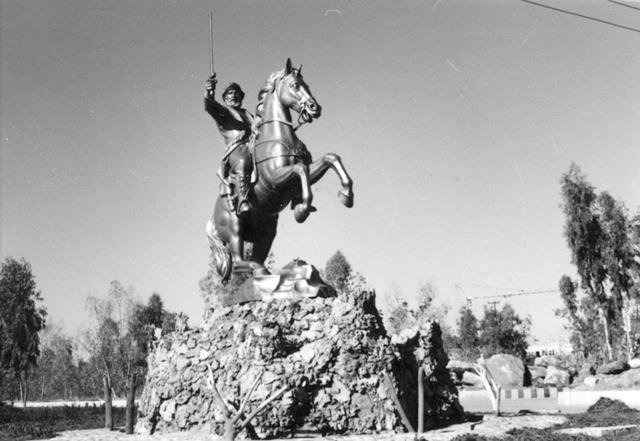
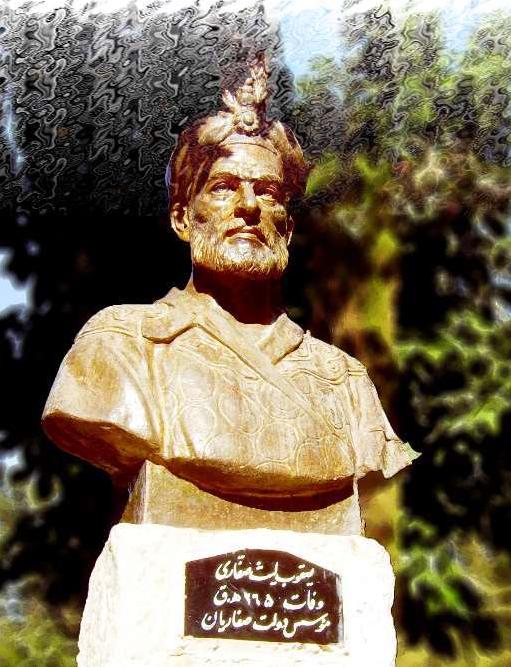
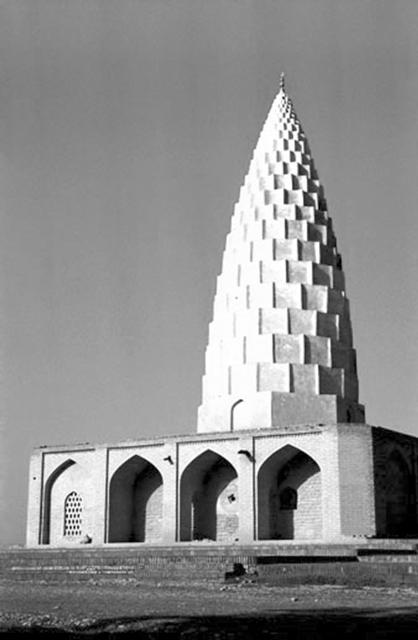
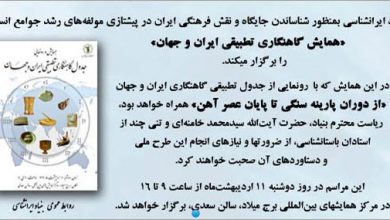
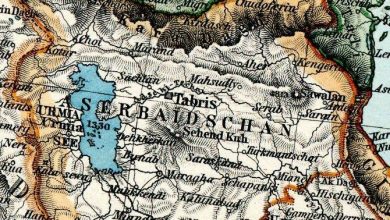
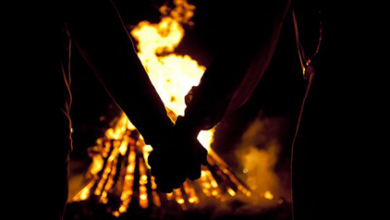
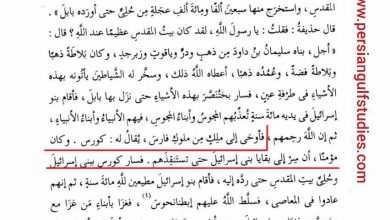
.If you are literate and study, the whole world will know that Yaqub Leith was a Sunni, you who know 100 new hadiths from our imams every day. Fix it, this is nothing for you, but you can't change your reality, don't go around on your own.
Hello, if the living tomb of Yaqub, the great Iranian general, is between Andimeshk and Dezful, what does it have to do with Prince Abul Qasim, which is located 25 kilometers from Lali city. Please clarify.….